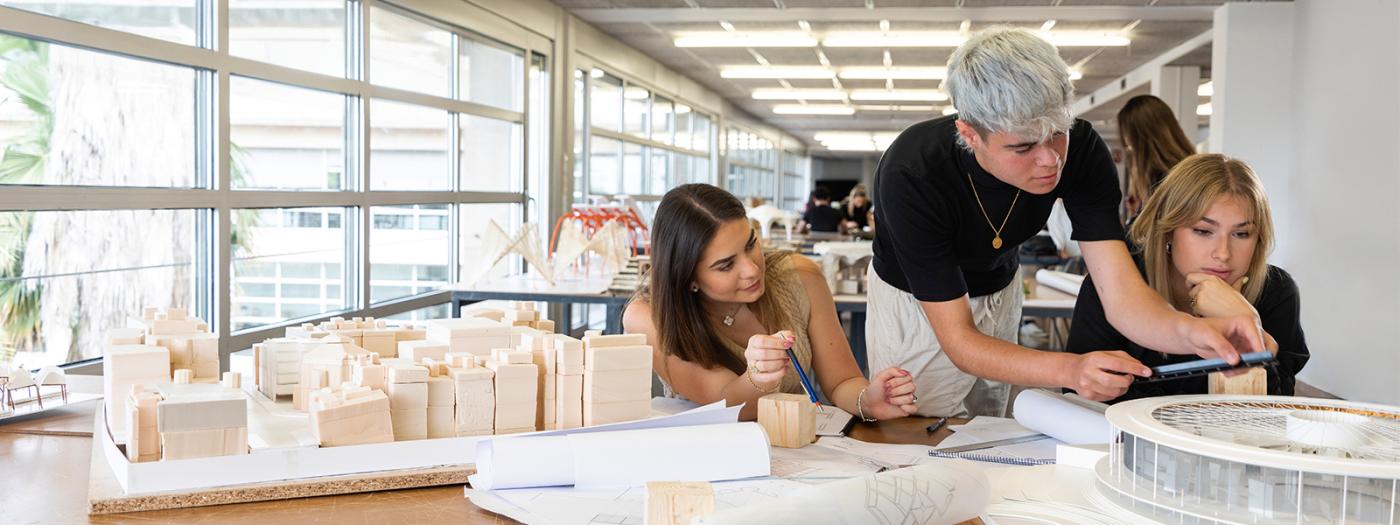- Understand, apply, and analyze comfort construction systems; the envelope.
- Comprehend the construction process of envelope systems from technical and sustainability criteria.
- Understand, apply, and analyze the suitability of materials in relation to the comfort system, the envelope, and its life cycle.
- Recognize regulations as a legal framework.
The Construction III course aims to provide an understanding, application, and analysis of comfort construction systems under technical and sustainable criteria, following the phases of envelope conception in the project, execution, and on-site control. It delves into the construction details, material requirements, quality control, and the life cycle of the proposed solution, always in compliance with current regulations.
1. The Vertical Envelope
A1. Heavy Façade; Wet Construction
A2. Lightweight Façade
A3. Openings
2. The Horizontal Envelope
B1. Roof with Heavy Support
Ground Contact Systems
Problem-solving and exercise classes
Laboratory practices
Self-paced learning
Flipped classroom
Gamification
Peer instruction
Real-world events
Just-in-time teaching
Lecture
Examinations
Assignments
Internal/external reports
Exercises, problems, and practical work
Projects
Group/individual presentations
Self-assessment
Class participation/attendance tracking
Project reviews: tutoring sessions
Project reviews: tribunal/jury evaluations
